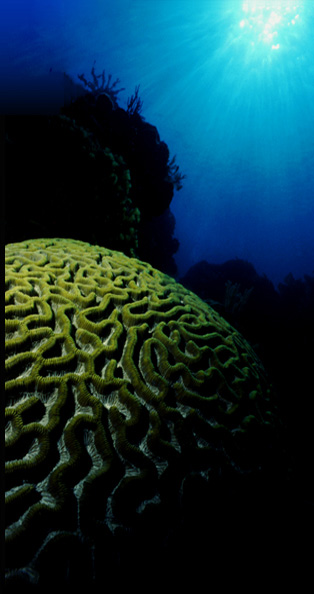|
Lenses:
Part 2: Which Lenses To Use:
Wide Angle
There are a multitude of wide-angle lenses available, but the most
useful in terms of utility are the super wide-angle lens. I'm
referring to 20mm lens or wider.
Why a 20mm over, say, a 28mm lens? The first reason has to do with
water magnification and the focal length multiplier of digital
cameras (covered in
Underwater Housings.)
If you're not shooting with a full-frame sensor
camera, a 28mm lens
effectively becomes a 50mm to 55mm lens underwater, depending on
the multiplier factor. Gone is the possibility of panoramic
"seascapes." Even a 20mm becomes a 35mm to 40mm underwater,
which is till somewhat limited for getting panoramic "seascapes."
Super wide lenses have four
more advantages over conventional wide-angle lenses:
First benefit: Enormous depth of field.
Depth of field is the area
that is sharp before and beyond the actual focus point. As
you stop down (use smaller f-stops), the depth of field increases.
Wide-angle lenses have inherently more depth of field than
standard or telephoto lenses.
When I was using my favorite film
camera combination, a Nikonos V and 17mm lens, my depth of field
was approximately one foot to infinity at f22. In other
words, I could focus on a subject approximately one foot away
--and still see the entire background |
















